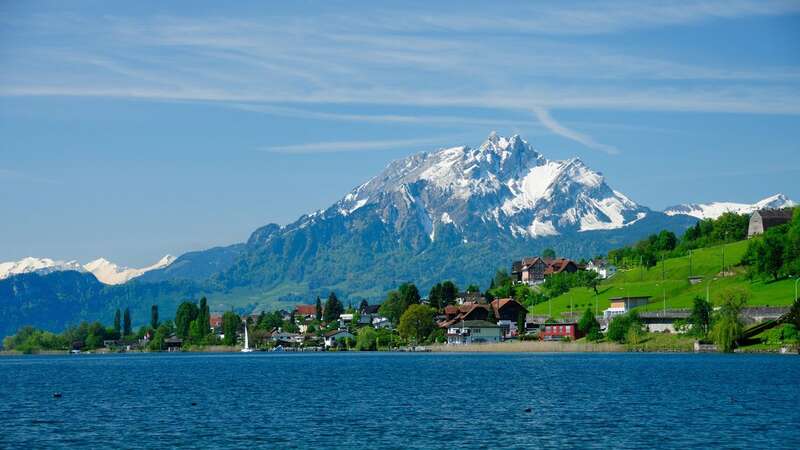A ridiculously pretty beach is hidden deep within the mountains of a landlocked country.
Lake Lucerne is the kind of place that needs to be seen to be believed. Nestled in the heart of Switzerland, in the shadows of mountains carpeted with deep green trees, it is a natural wonder of turquoise waters, surrounded by picturesque mountains and charming towns.
The Lucerne Lido is the favoured shoreside spot, with the 300-metre sandy beach offering breathtaking views of the Pilatus, Bürgenstock and Stanserhorn mountains as well as the city of Lucerne itself. Both the sand and the ample, shady lawn areas are fine places to kick back and relax in the often surprisingly warm Swiss summer sunshine.
Lake Lucerne's sandy stretches have been named among the best 'golden beaches' in the world by Beach Atlas, which annually gets a group of coastal experts, travel writers and influencers together to attempt to work out where in the world is bestowed with the most remarkable beach.
 The beach was highlighted by Beach Atlas (Getty Images/iStockphoto)
The beach was highlighted by Beach Atlas (Getty Images/iStockphoto)This time around the seaside savants have broadened out their criteria - looking beyond just "powdery sands and clear blue waters" to a "richer tapestry of what makes a beach remarkable."
 Beachgoers horrified after finding young woman with head and hands chopped off
Beachgoers horrified after finding young woman with head and hands chopped off
"Lake Lucerne, nestled in the heart of Switzerland, is a stunning natural wonder with its turquoise waters, surrounded by picturesque mountains and charming towns, attracting visitors from all over the world. More than its visual charm, the lake carries a deep historical significance, linked to the legendary figure of William Tell," its travel experts write of Lake Lucerne.
"This hero escaped from captors by leaping off a boat on the lake, and then remarkably shot an apple off his son's head. A commemorative site, the Tellsplatte, marks the spot of Tell's leap, blending the lake's beauty with the Swiss cultural folklore. This event ultimately led to the rebellion that was one of the key milestones in the creation of the modern state of Switzerland."
Rough Guides highlights Lake Lucerne as one of the best locations in Europe for a slow-travel holiday. It can be easily reached via train or river boat, and then explored through dozens of hiking routes or bike trails around its edge.
There are many medieval covered bridges which span the rushing waters of the River Reuss, baroque churches, old-town squares and elaborately frescoed facades, all adding to the general other-worldly, fairy tale charm of the area.
The town which gives the lake its name is known for its preserved medieval architecture and general quaintness. If you climb up one of the towers in the old town you can spy church spires, mountains, lakes, highland cattle and alpaca.
It may be bucolic almost beyond belief, but there is still plenty to do and a pace which is far from glacial. Around 80,000 people live in Lucerne, giving it a certain energy that spills out from the bars and cafes onto the cobbles and town squares when the evenings are nice.
The Swiss tourist board notes, the lake offers very different things at different times of the year. "A steamer cruise across the convolute lake of Lucerne on a sun-filled summer’s day is without doubt a wonderful experience. But a trip on a late scheduled sailing through a mild summer’s evening or, shortly before Christmas, toward the sea of lights that is the town of Lucerne must at least be just as unforgettable," its website reads.
"As is the mystical mood on the lake during the autumn mist period, and when the steamer cuts steadily through the waves on Lake Uri whipped up by the föhn wind. Trips in the cosy warmth of the saloon motor vessels, whilst the snow-covered winter landscape passes by outside, can only be described as complete relaxation."
Check out by signing up to our free weekly newsletter.
Read more similar news:
Comments:
comments powered by Disqus

































